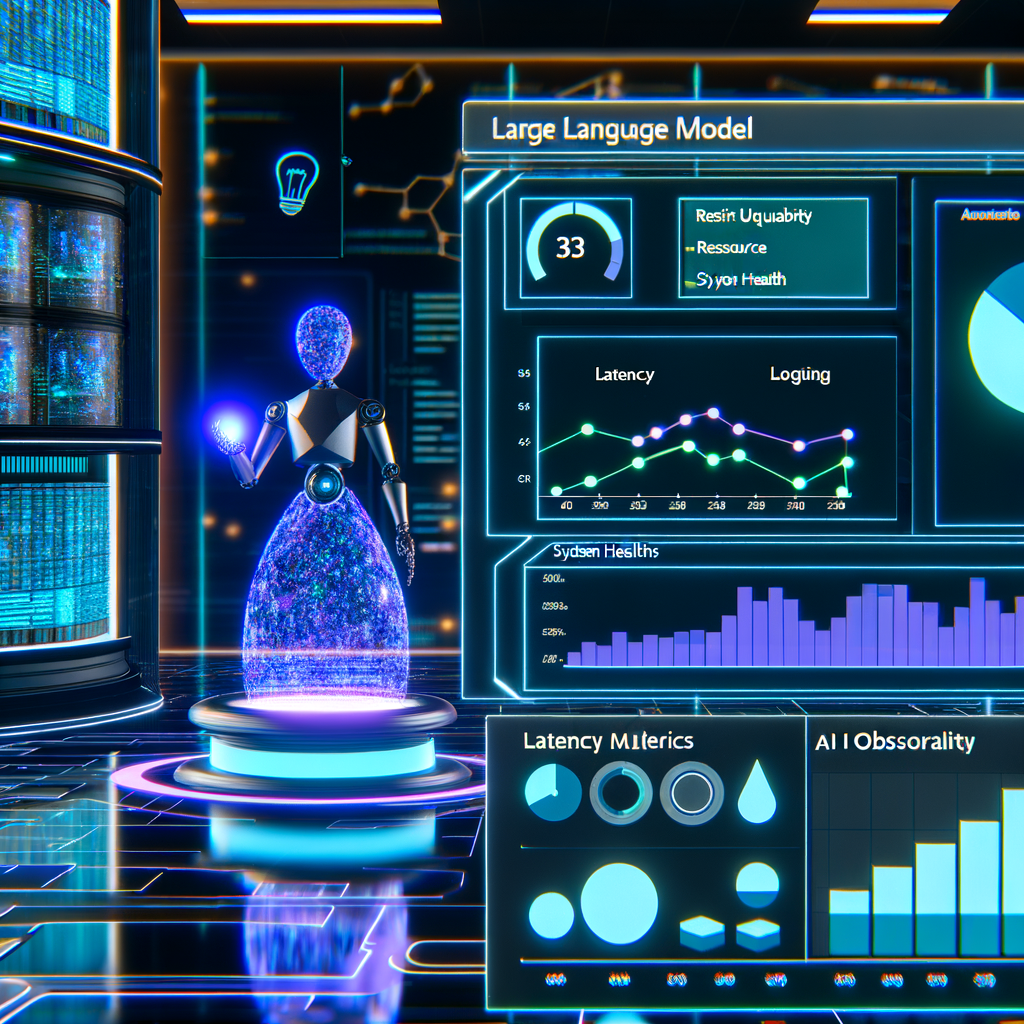LLM Observability Tool Launch
The artificial intelligence landscape is evolving rapidly, and behind every successful Large Language Model (LLM) is a mountain of complexity. Successfully managing, analyzing, and optimizing the performance of these models can often seem overwhelming. Yet Middleware, a company specializing in infrastructure observability and performance monitoring, aims to simplify the playing field for developers and enterprises alike. They’ve made waves with their latest release: an LLM Observability Tool that promises to help users dissect, understand, and enhance the performance of LLMs. But the real magic? They also dropped Query Genie, and let’s just say, it’s like having a mind-reading assistant for querying data.
The Need for LLM Observability
Running LLMs is no walk in the park. These models are known for their sheer computational heft, requiring vast infrastructure, especially in large-scale deployments. But it’s not just about having the horsepower – think of it like owning a Formula 1 car. It’s fast, but without the ability to track lap times, monitor tire pressure, or analyze fuel consumption in real-time, you’re left flying blind. This is where Middleware’s LLM Observability Tool slots in perfectly, offering the necessary telemetry to make data-driven adjustments on the fly.
By creating an environment where you can track model activity, latency, throughput, and resource usage, developers no longer need to rely on trial and error. Forget the guessing game, you can now watch your LLM performance rise up in real-time.
What is LLM Observability, Really?
In everyday terms, observability simply refers to the ability to understand the inner workings and behaviors of complex systems. With LLMs, it’s about going beyond surface-level metrics to see what’s really going on when a model processes text prompts. Middleware’s tool offers metrics on both the micro and macro activities of LLMs, letting developers navigate a traditionally opaque landscape.
Imagine you’re running a model and things just… slow down. Instead of spending hours tweaking random knobs, with consistent observability, you know which levers to pull. Middleware’s solution gives you deep insights into your model’s architecture, making you feel more like a Formula 1 pit crew, reducing downtime and maximizing performance.
Introducing Query Genie – The Wishgranting Data Query Assistant
Thankfully, Middleware didn’t stop at observability alone. Enter Query Genie, a clever tool that cuts through the noise of traditional data querying. We all know the pain: sifting through layers of data tables, writing complex SQL or other queries, finally landing on you kinda-almost-sort-of getting what you want.
But this isn’t your dad’s query tool. Query Genie acts like your personal wishing well for information retrieval, serving you answers on a silver platter. Its core premise is simple – after you provide a natural language query, Query Genie gets to work under the hood, doing the heavy lifting, and surfaces the relevant data points. What can take hours or even days using manual queries now boils down to seconds. From “Show me the performance of this specific prompt over the last month” to “What’s my most frequent system bottleneck?” – Query Genie is here, making life so much easier.
Why Middleware’s LLM Observability Tool Stands Out
So what makes this tool shine in a sea of shiny tech products? Middleware has tapped into three key pillars:
Built with careful attention to the challenges that developers face when deploying LLMs, this launch feels as much about democratizing observability as it is about enhancing capacity.
What’s in It for You?
Let’s be frank, most businesses using LLMs will benefit from enhanced visibility into their models’ performance. Whether you are a developer looking to optimize resourceful usage or a product lead aiming for consistent user experiences, having clear and actionable data about your model’s behavior can be a game-changer.
Lowering operational costs, spotting inefficiencies faster, and providing clearer accountability are only a few of the rewards you’ll reap by upgrading to a clearer, more transparent LLM experience. Plus, adding an interactive data querying wizard like Query Genie into the mix only makes the deal sweeter.
Where Middleware Will Take This Next
As the field of LLMs continues breaking new ground, tools like Middleware’s LLM Observability Tool and Query Genie will undoubtedly shape the landscape of how these models are maintained. More transparency in model function also paves the way for broader adoption of LLMs across industries that are not traditionally tech-heavy.
Middleware’s track record suggests this is just the beginning. Expect future updates expanding upon real-time analytics, more intuitive dashboards, and extended support for emerging LLM frameworks – all while keeping ease of use front and center.
Closing Thoughts
Let’s be clear: the introduction of Middleware’s LLM Observability Tool, paired with the all-encompassing power of Query Genie, isn’t just tech evolution; it’s a revolution in how we interpret and optimize LLMs. The future of LLMs doesn’t just depend on breakthroughs in model size or computational ability, but the ability to fully monitor, measure, and tweak those models for success.
With Middleware at the helm, things are indeed looking more transparent, and who knows? We might all just become LLM whisperers before long.



